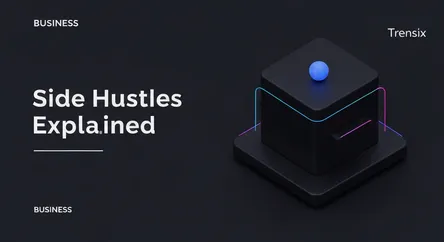Business
Side Hustles Explained

Discover what a side hustle is, why so many are starting one, and how this trend is reshaping work, income, and entrepreneurship for millions.
What is it?
A side hustle is any type of work or business a person undertakes in addition to their primary job. Unlike a part-time job with a fixed schedule, a side hustle typically offers flexibility and is driven by a personal goal. This could be to earn extra income, pursue a passion, or test a business idea with minimal risk. Examples range widely, from freelancing creative skills like graphic design or writing, to selling products on Etsy, driving for a ride-sharing app, or managing social media for small businesses. It's essentially a form of micro-entrepreneurship.
Why is it trending?
The rise of the side hustle is fueled by several factors. The growth of the gig economy and digital platforms like Upwork, Fiverr, and Shopify has made it easier than ever to monetize skills and hobbies. Economic uncertainty and rising living costs also motivate people to create additional income streams for financial security. Furthermore, many individuals use side hustles as a creative outlet or a way to build skills and experience in a field they're passionate about, which may not be possible in their main career. The desire for greater financial independence and work flexibility is a core driver.
How does it affect people?
A side hustle can have a profound impact on an individual's life. Financially, it provides a buffer, enabling people to pay off debt, save for major goals like a down payment, or simply improve their quality of life. Professionally, it's a low-risk way to explore entrepreneurship, build a portfolio, and develop valuable business skills. For many, it's a pathway to eventually turning their passion into a full-time venture. However, it also demands excellent time management and can lead to burnout if not balanced properly with one's primary job and personal life.